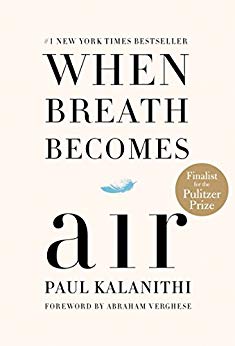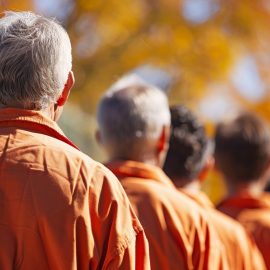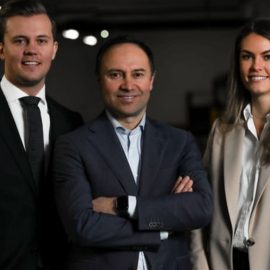

This article is an excerpt from the Shortform summary of "When Breath Becomes Air" by Dr. Paul Kalanithi. Shortform has the world's best summaries of books you should be reading.
Like this article? Sign up for a free trial here .
Dr. Emma Hayward is an American oncologist. She treated the cancer of Dr. Paul Kalanithi, and she was featured in the book When Breath Becomes Air.”
Paul Kalanithi was a respected doctor in neuroscience and worked with many other reputable doctors. But when Paul was diagnosed with lung cancer just as he was preparing to reach his career goals, he found himself on the other side of the doctor-patient relationship. Throughout When Breath Becomes Air, Paul discusses how his doctor, Emma Hayward, helped him frame his diagnosis differently and live a better life.
Shortform note: This article and our summary of When Breath Becomes Air is written in a way that allows you to share in the experience provided by the memoir.
Simply reading about the content of the story seems insufficient in expressing the emotional journey. To really provide you with the sensation this book creates, we wrote in the first person, using a voice similar to his. We highly recommend reading the original book for the full experience. Reading the words coming directly from him is a powerful experience we can’t replace.
Meeting Dr. Emma Hayward and Paul’s Diagnosis
Dr. Emma Hayward the diagnosis with us, but she wouldn’t discuss a prognosis. She focused on how we should approach treatment so I could return to work. I thought she was out of her mind. Surely, returning to work was not an option. I knew it was an option I couldn’t even consider without knowing where I stood within the threshold I’d met so many patients at.
My network of support went to work, researching oncologists specializing in lung cancer to ensure I had the best care possible. The results of those searches all came back to the same place. Emma Hayward was the best and was respected as such within the medical community. She wasn’t just respected for her skills as a physician, however. She was also considered to be the best gatekeeper, the best judge of not just treatment, but of identity, as well. I couldn’t help but see the series of events that had landed me in this hospital and in the care of the best person in the world at the exact time I needed her as more than coincidence.
Emma informed me of two possible avenues for treatment. There was the standard chemotherapy, attacking the cancer from the outside in. But there were other therapies, new discoveries that attacked the cancer from the inside out. I hadn’t realized how many advancements had been made in the treatment of certain types of cancer, and there was evidence that some of these newer therapies led to unthinkable survival rates for some.
This was the kind of discussion I’d had with so many patients. Explaining the approaches, outcomes, and option considerations. Emma Hayward was the kind of doctor I wanted—a doctor like me. For Emma, the considerations surrounded my ability to go back to work. This consideration was less of a priority for me, and I told her so. I could forge a different path if I had to. I wanted the treatment that would work the best, even if it meant losing my ability to operate.
My identity as a neurosurgeon had faded with my diagnosis, but here she was, telling me I could possibly be me again. I started to believe perhaps I could be, and that belief was pacifying.
Changing Your Life’s Narrative
My meetings with Emma Hayward started to surround what my life’s narrative should be. I could follow the path that so many tended to follow—embrace the personal with everything I have left, such as family, friends, and experiences—or I could focus on becoming me again.
I’d always assumed I would work as a doctor and scientist for twenty or so years and transition to writer. Without knowing how much time I had left, I didn’t know which pursuit of the two was the priority or whether either were the right choice. If I had limited time, I would write. If I had a long-term prognosis, I’d continue on in medicine.
I told Emma all of this, but she still wouldn’t provide a number. She said she couldn’t, but I knew enough from my own experience that even when we won’t say how much time is left, we always had a sense of it inside. But there’d been times when I was wrong, when a patient I thought shouldn’t be kept alive recovered and lived a full life. I realized the determination of how I spent the rest of my time shouldn’t be motivated by subjective barriers.
I couldn’t fall back on a prognosis to tell me whether I should work or cherish what I had left. I couldn’t use it to decide whether or not to have a child. As a doctor, the statistics helped me formulate a clear picture for my patients, but for me, the picture was fuzzy. I would have to look death in the eye and determine what was important to me, what gave my life meaning, and find a way to try to live that life in whatever way I could.
I was physically diminished, and at first, just lifting my legs was a struggle. My physical therapist asked what I wanted to accomplish with therapy, and I said the ability to bike and run again, two things I’d regularly and readily enjoyed. Losing those abilities compounded my loss of identity. But each day that I made a tiny step in the direction of progress, I was seeing a possible path back to some semblance of the old me.
Emma Hayward challenged me to concentrate on my values and priorities, rather than my chances. These thoughts included those of being a father, and Lucy and I revisited our thoughts on having a child. We both felt that if human relationality was the foundation of a meaningful life, a child could only enhance that. She was concerned about whether raising a child was the right choice for me for whatever time I had left. I was concerned about whether raising a child alone and simultaneously caring for a sick husband was the right choice for her life.
I knew that without Emma Hayward, I could never have gotten back to this place. After my diagnosis, I couldn’t see a way back to who I was before, but she had kept my identity alive despite my misgivings. She had met me where I was and nurtured her moral obligation to lead me forward until I could see the path back to myself again.
Treatment and the Way Forward
Forty pounds lighter since my diagnosis, I was slated for discharge from the hospital. I was back to my eighth-grade weight. I was lucid again but worn. My skin was a mere sheath over my bones, and simple acts, like keeping my head upright or drinking a glass of water, were taxing. And I was no longer able to read.
Treatment would have to wait until I was in better shape, and experimental trials were out of the question in my condition. The next time I saw Emma, she told me that I likely had another five years ahead of me, but the words rang hollow. She was no longer the poised, assertive guide. She was a hopeful companion in the dark tunnel searching for light.
On my way home from meeting with Emma, Lucy went into labor. My father brought me to the hospital, and on a cot, I lay in the delivery room covered in blankets and heating packs. We waited for two hours for Lucy’s final push. On the Fourth of July, our daughter, Elizabeth Acadia, was born. We called her Cady for short.
I held my swaddled baby and Lucy’s hand at the same time, both of us peering down into the face of life. The finality of my death was still a question, but instead of all the “what ifs,” holding Cady, I now saw a clean slate on which anything was possible.
Shortform note: Dr. Paul Kalanithi faced an incredibly difficult journey, and found great comfort and insight in his doctor-patient relationship with Dr. Emma Hayward. As a doctor who became a patient, Paul benefitted from Dr. Hayward’s approach to treat him, but also encourage him to live a meaningful life.

———End of Preview———
Like what you just read? Read the rest of the world's best summary of Dr. Paul Kalanithi's "When Breath Becomes Air" at Shortform .
Here's what you'll find in our full When Breath Becomes Air summary :
- How Paul Kalanithi discovered he had cancer
- How Paul coped with his cancer until his very end
- How Paul's wife dealt with his death and found the strength to continue






